
After nearly a month, we’ve finally had a chance to use Asus’ upcoming ROG Ally handheld. It packs more powerful hardware than the Steam Deck, as well as Windows 11, allowing you to play games from any storefront. But does it have the gusto to take down Valve’s value-focused handheld?
For performance chasers, there’s no doubt that the ROG Ally delivers in a way the Steam Deck cannot. But the Steam Deck still has its place for those looking for an inexpensive handheld that supports a wide range of features.
It’s all a matter of price

We’re still light on critical details for the ROG Ally, but Asus promises to reveal more during the console’s launch event on May 11. The main thing we’re waiting for is the price, which is the key to beating Valve’s $400 Steam Deck.
There’s a good chance Valve will hang on to the value crown, but there’s a lot more at play for the ROG Ally. For starters, the Steam Deck can cost much more than $400. At that base price, you’re only getting 64GB of relatively slow storage. To jump up to 256GB with an NVMe SSD, you’ll need to spend $530. And for 512GB, the price is $650.
Asus says the ROG Ally comes with “up to 512GB” of storage, suggesting there could be multiple models, like the Steam Deck. Although we might not get a $400 model, it’s not out of the question that the flagship could compete with the Steam Deck. An Asus representative has confirmed that the price will be below $1,000.
Some curious specs

The ROG Ally looks pretty, that’s for sure, but it’s really the underlying hardware that makes Asus’ handheld exciting. We now know that the ROG Ally is powered by AMD’s Z1 Series processors, which are custom APUs leveraging Zen 4 CPU cores and RDNA 3 GPU cores. AMD has two of these Z1 processors available, though, and they’re very different.
The Ryzen Z1 comes with six Zen 4 cores and four RDNA 3 cores for a total of up to 2.8 TFLOPS of theoretical performance. The Ryzen Z1 Extreme, by contrast, comes with eight Zen 4 cores and a massive 12 RDNA 3 cores. That enables much higher performance — up to 8.6 TFLOPs, according to AMD.
Again, Asus hasn’t revealed which of the processors the ROG Ally is using, but the company cleverly says the handheld is powered by AMD Ryzen Z1 “processors,” lending a little more credibility to the speculation that the company will release two models of the ROG Ally.
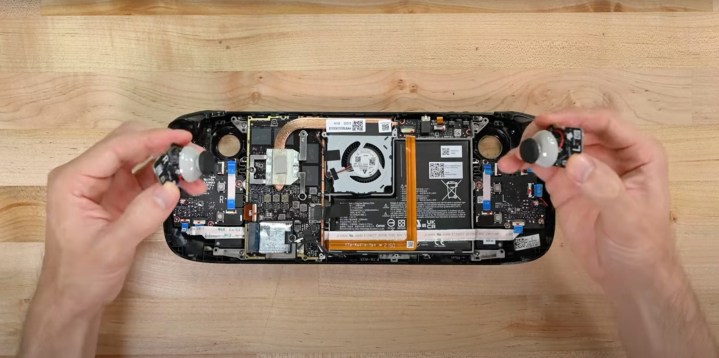
By comparison, the Steam Deck is packing much weaker hardware. Regardless of the model you choose, you’re getting four Zen 2 cores and eight RDNA 2 cores, which offer up to 1.6 TFLOPs of theoretical performance. The Steam Deck’s APU also tops out at 15 watts, while the ROG Ally can go up to 30W in its Turbo mode.
There’s a big difference between the APUs, but the Steam Deck and ROG Ally have some specs in common as well. Both devices come with 16GB of LPDDR5 memory, and they both include a Micro SD card slot for storage expansion. They also both support USB-C for charging and come with a 3.5mm headphone jack.
A clear performance champ

There’s little argument at this point — the ROG Ally is faster than the Steam Deck. In our hands-on time with the device, it was able to achieve much higher performance in High on Life, Forza Horizon 4, and Minecraft Legends, surpassing 60 frames per second (fps) in most cases. We weren’t able to get raw performance numbers, but it’s clear after just a few minutes that the ROG Ally is in a different performance class.
AMD shared some performance data for the Z1 processor packed in the ROG Ally. These benchmarks were run with the ROG Ally, but in its Turbo mode that doubles the wattage of the Steam Deck. Expect much lower battery life in this mode.
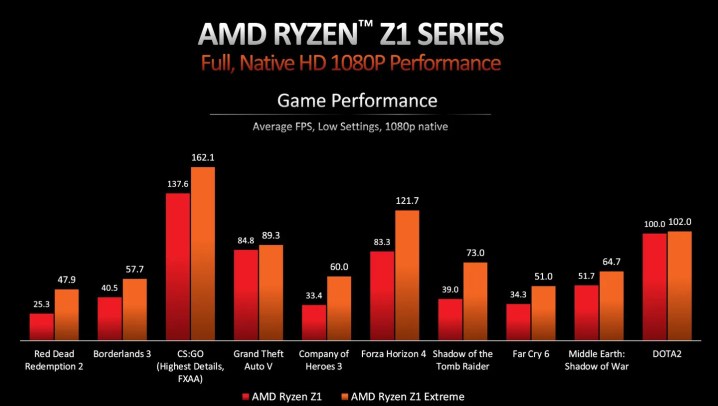
It’s important to note that these benchmarks were run at 1080p, while the Steam Deck tops out at 800p. Early claims say the ROG Ally is twice as fast as the Steam Deck, and it might be even faster if you run your games at a lower resolution.
It’s a given that the ROG Ally will offer higher peak performance than the Steam Deck, but that will likely come at the cost of battery life. We still don’t know how large the battery is in the ROG Ally, but it’s capable of twice the wattage of the Steam Deck. That could mean it dies quickly, but we’ll have to wait until we’ve had more time with the device to know for sure.
Windows 11 is a winner
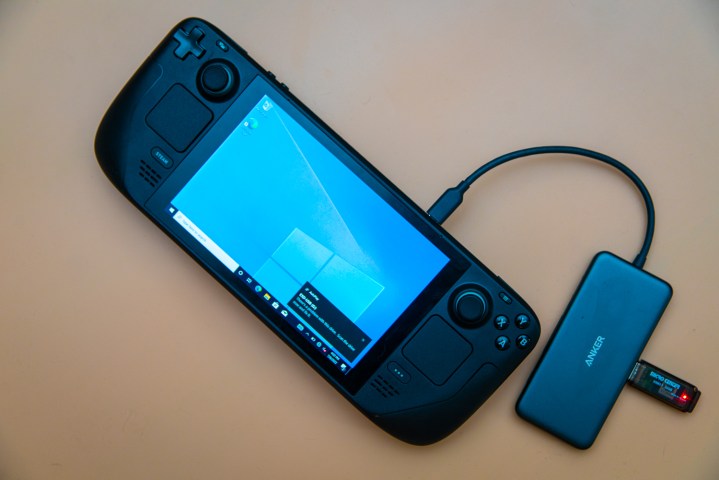
One of the most important differences between the ROG Ally and Steam Deck is the operating system. The Steam Deck uses Valve’s custom SteamOS, while the ROG Ally will leverage Windows 11.
There are pros and cons no matter which way you look. For the Steam Deck, SteamOS provides an easy-to-use, streamlined interface for handheld gaming. It certainly helps that it’s tied into the largest distribution network for PC games, as well, allowing you to easily shop for new titles.
It has myriad problems, though. For starters, SteamOS is still remarkably buggy. For my own Steam Deck, I have to leave Wi-Fi turned off when I’m away from the charger because the handheld will occasionally get confused and think it’s out of battery, even with a full charge. These types of idiosyncrasies are rampant in SteamOS.
For most people, the biggest difference is that SteamOS is built on Linux. That means you’re locked out of playing quite a few games, including those with anti-cheat software and games on other marketplaces (such as the Xbox app). Windows 11 solves that problem for the ROG Ally, allowing you to play games in other storefronts and titles that use anti-cheat software like Destiny 2.

There are some potential downsides of Windows 11, though. It’s a fully-featured OS, and it comes with a lot of overhead. If Asus doesn’t carefully manage what the OS is doing, it could be a massive suck on battery life. In our first demo, we noted that the ROG Ally was willing to let you run multiple applications, including multiple games, so there are a few potential problems for managing what you have open.
Asus isn’t a novice here, though. The company makes some of the best gaming laptops you can buy, and ultimately, the ROG Ally is a condensed laptop with different controls. The company has flexed its expertise in some areas, such as remappable controls through Armoury Crate. The application allows you to bind keyboard and mouse commands to buttons, and even attach shortcuts and actions like opening the Task Manager.
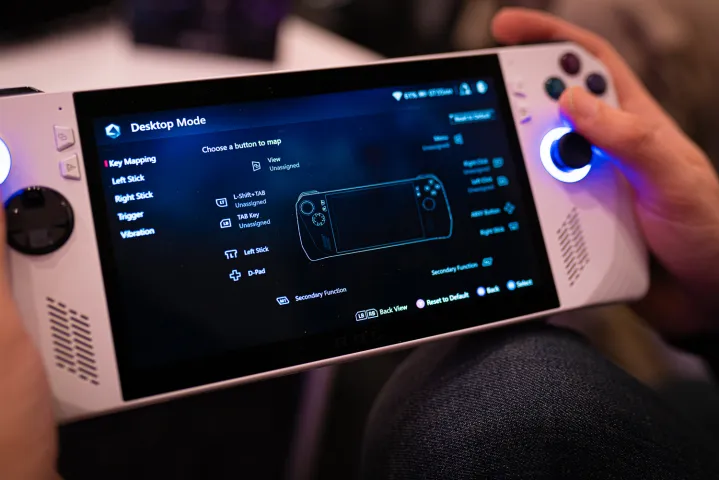
Windows 11 could pose some issues for battery life, but you don’t need to interact with the OS at all. Instead, Asus’ Armoury Crate hooks into the EA app, Xbox app, Ubisoft Connect, GOG Galaxy, Epic Games Store, and Steam and loads your games in. Even better, there’s a dedicated button the device that brings Armoury Crate up if you ever stay into Windows.
Winning display could cause problems

Even based purely on specs, it’s not hard to see that the ROG Ally will have a better display than the Steam Deck. The Steam Deck comes with a 1,200 x 800 display that tops out at 60Hz and 400 nits of peak brightness. By comparison, the ROG Ally will have a 1920 x 1080 display with a 120Hz refresh rate and 500 nits of peak brightness.
Double the refresh rate and resolution basically assures that the display on the ROG Ally will be more pleasing than the one on the Steam Deck, but there are some consequences of this design. Most importantly, higher pixel counts and refresh rates have a huge impact on battery life. Thankfully, like the Steam Deck, the ROG Ally allows you to change your resolution, refresh rate, and brightness if you’re going for the longest battery life.
There’s also a performance concern. Although the Steam Deck has a lower resolution, that means games are able to run much easier on the hardware. With a higher resolution, the ROG Ally has to provide much more power to hit the same frame rates at native resolution.
Battle of the handheld gaming PCs
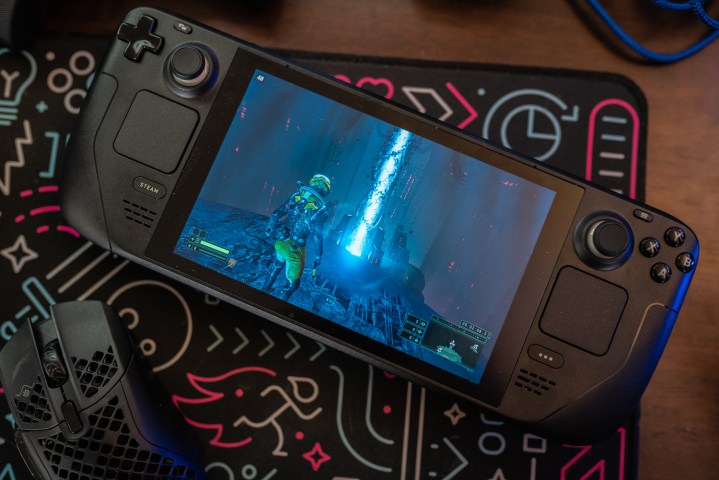
Although we’ve seen various Steam Deck alternatives, the ROG Ally seems uniquely positioned to challenge Valve’s handheld. Coming from a major brand with decades of experience in gaming laptops, it could provide some stiff competition.
The biggest hurdles right now are price and battery life. The Steam Deck offers an excellent valve with its $400 base price, and although the battery life isn’t perfect, it’s still manageable. The ROG Ally, if it wants to take on the Steam Deck, needs to have a decently low price and many tools to preserve your battery.
Editors’ Recommendations


